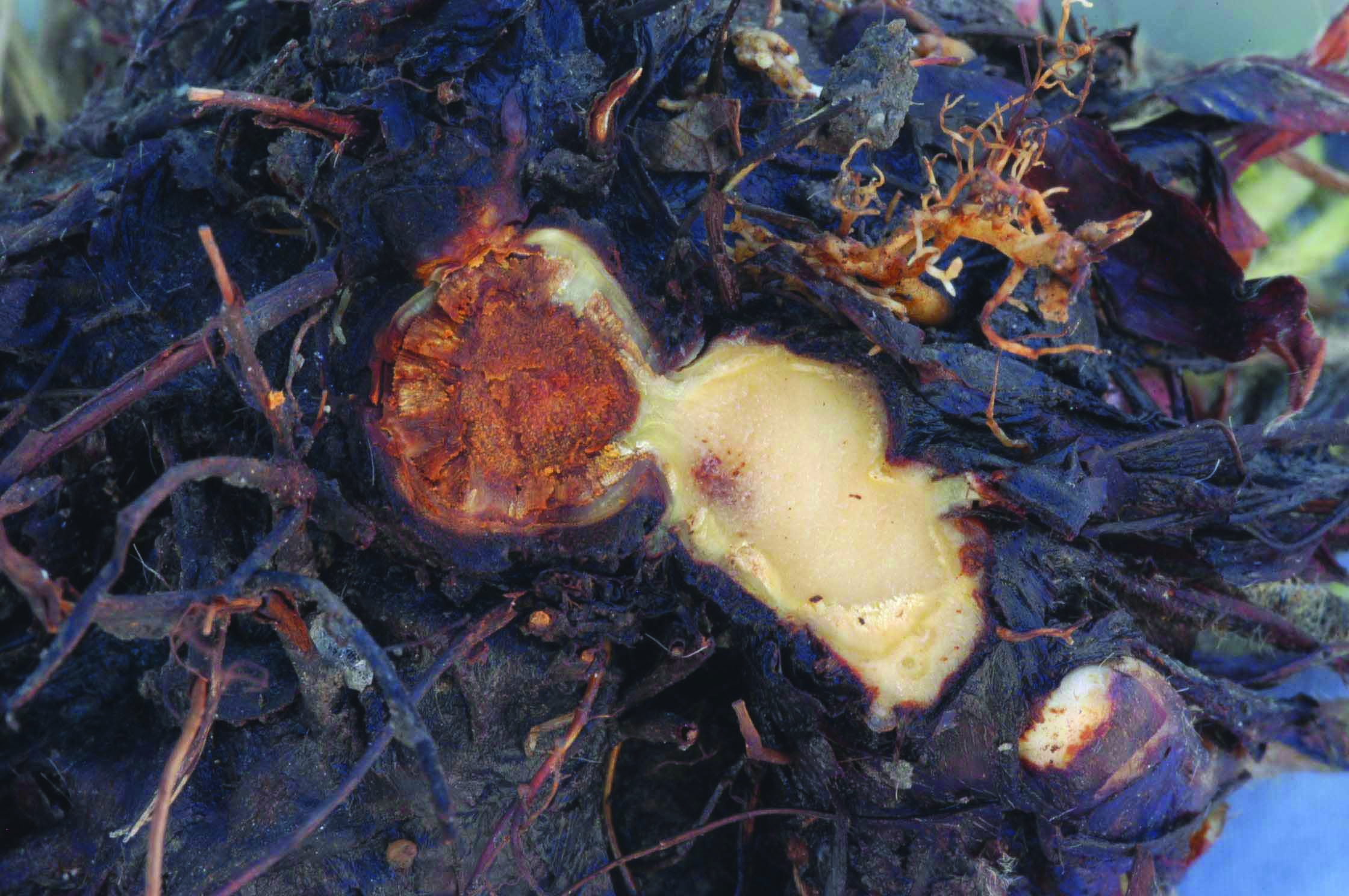
Jan 18, 2019Select strawberry varieties show charcoal rot resistance
Charcoal rot is a universal problem for strawberry breeding programs, according to disease resistance trials at the California Polytechnic State University Strawberry Center.
Also known as the fungus Macrophomina phaseolina, charcoal rot is a growing problem in California, where the vast majority of U.S. strawberries are grown.
Growers first started reporting trouble with it in 2005 in plots that were no longer fumigated with methyl bromide.


Steven Koike/University of California
Charcoal rot symptoms started to show in established plants that have begun to produce fruit. Older leaves wilt, turn grayish green and begin to dry out. The entire plant can collapse and die, and in severe cases, large portions of a field can be affected, according to production guidelines of the California Strawberry Commission.
Strategies for managing charcoal rot include crop rotation, avoiding stressing the plants and pre-plant fumigation with products other than methyl bromide, according to an article by Steven Koike and Mark Bolda of University of California Cooperative Extension.
Many types of soil-borne fungi and disease are getting worse since methyl bromide fumigation has been phased out, said Gerald Holmes, director of the Cal Poly Strawberry Center. Other fumigants still available for use are chlorophithryn, 1,3-dichloropropene, VAPAM HL, K-PAM HL and a new biological product for fumigation called Dominus. Charcoal rot and fusarium wilt both have the symptom of crown tissue turning dark brown to orange-brown, and specimens often need to be tested in a laboratory in order to tell which is to blame.
Not all strawberry plants are affected equally by charcoal rot.
“It appears there is a wide range of responses,” Holmes said. “Some never do die.”
Cal Poly tested 90 strawberry varieties from six breeding programs: University of California Davis (UC Davis), University of Florida, Driscoll’s, Plant Sciences, Planasa and Lassen Canyon. A block of each variety was inoculated with a Macrophomina phaseolina-infested mix of sand and cornmeal. Researchers recorded plant deaths every two weeks after symptoms began to show.
The third year of research at Cal Poly was recently published in a student master thesis poster. While none of the breeding programs seemed to rise to the top, specific varieties from different programs did show resistance.
The five varieties with the lowest percentage of plant death were Driscoll’s Osceola and Manresa, UC Davis’ UC-V and UC-G, and Plant Sciences’ PSI-D. The three varieties with the highest percentage of mortality were UC Davis’ UC-J, Lassen Canyon’s Ruby June, and the University of Florida’s Festival.
There was quite a range in the percentage of plants that died, from 1.3 percent (Osceola) to 92.9 percent (UC-J).
There are different theories, but no conclusions, as to why some varieties out-performed others. Holmes described the fungus as an “opportunist,” waiting for the plants to become stressed, and he wonders if more resistant strawberries have bigger root systems or were more “drought-tolerant” and able to better scrounge for water.
However, the Cal Poly research does show that breeding programs in the past have not focused on charcoal rot resistance.
“They are now,” Holmes said.
He added that the data on different strawberry varieties’ resistance to crown rot is now valuable to the breeding programs as they decide which plants to cross with each other.
“Finding out how things react is the biggest takeaway,” he said.
– Stephen Kloosterman, FGN Associate Editor














